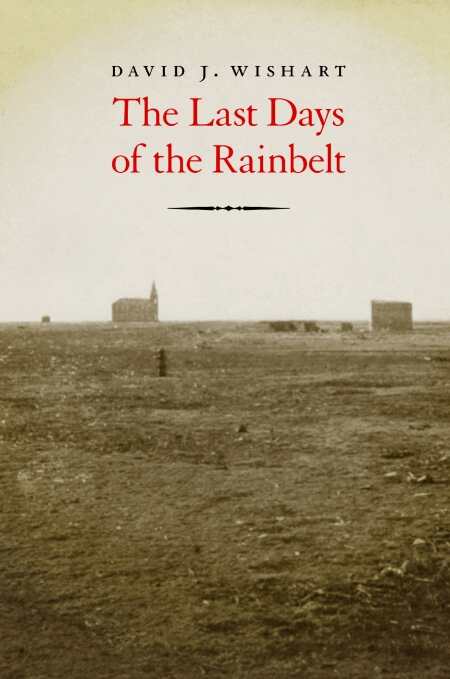The Last Days of the Rainbelt
Wishart ensures that a period of Great Plains settlement, struggle, and abandonment will not be forgotten.
In The Last Days of the Rainbelt, geography professor David J. Wishart examines the myth that once provided the spur for pioneer settlement in the Great Plains: that cultivation of the soil in America’s dry, dusty heartland would result in increased rainfall.
Hopeful pioneers, taking advantage of the Homestead Act that effectively offered free land in exchange for the hard labor to improve it, were encouraged by railroad boosters, dubious experts, and the persistent mythology that “they were changing the climate for the better” by farming in areas where tough grasses had for eons been the only vegetation that survived. Settlers were drawn westward by newspaper ad campaigns that proclaimed “the unsurpassed fertility of the soil” and depicted “Mississippi steamboats on the South Platte.”
With faith in popular agricultural science, these hardy folk believed that newly planted crops and trees would magically attract rain. That the promised climate change never occurred was one of the most significant factors in driving settlers out of the so-called rain belt. Wishart chronicles the railroad development that made settlement possible, the growth of towns and new states that needed settlers to thrive, and the unpredictable weather patterns that brought both the hoped-for moisture and the ever-feared drought, causing economic booms and busts.
Wishart, who has written other well-known historical works about the Great Plains, has collected here, among other gems, excerpts from interviews conducted with original homesteaders by the Civil Works Administration in 1933 and 1934, in eight eastern counties of Colorado. These, in combination with other primary sources such as land office and census records, newspapers, photographs, and historical atlases, present a living archive.
Wishart recognized that this period of Great Plains settlement, struggle, and abandonment could easily be forgotten since those who lived through it had no special agencies to help—no photographers, writers, or social activists to bring their hardships to public attention as happened later in the Dust Bowl years. This memorial on the printed page springs from an academic source, but Wishart, who clearly has zeal for the subject, has skillfully fashioned the results of his research into a narrative that will appeal both to students of the era and to lovers of American western lore.
Bringing the rain-belt saga into line with current science, Wishart concludes that “climatic models, though not always in agreement, predict a continuation” of a gradual increase in temperature and decrease in rainfall throughout the region.
Reviewed by
Barbara Bamberger Scott
Disclosure: This article is not an endorsement, but a review. The publisher of this book provided free copies of the book to have their book reviewed by a professional reviewer. No fee was paid by the publisher for this review. Foreword Reviews only recommends books that we love. Foreword Magazine, Inc. is disclosing this in accordance with the Federal Trade Commission’s 16 CFR, Part 255.

